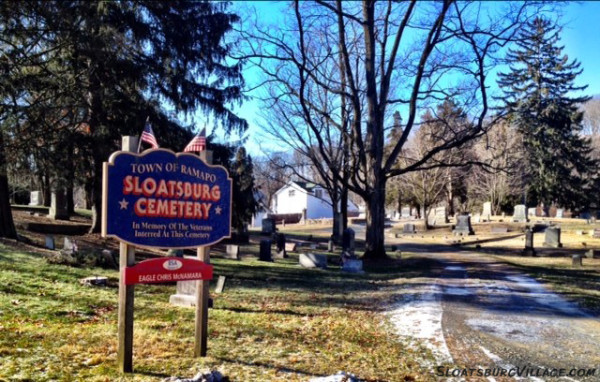
A recent Eagle Scout project repaired remnants of an entrance piller to the Sloatsburg Cemetery as well as cleaned some 50 veteran grave markers.
Boy Scouts working on earning Eagle Scout wings have been involved in various projects around Sloatsburg the past several years. Whether updating electrical outlets at St. Joan of Arc Church, painting fire hydrant blazes throughout village roads, remodeling rooms at the Sloatsburg Ambulance Corp, or other community beautification efforts, scouts have been hard at work on local projects.
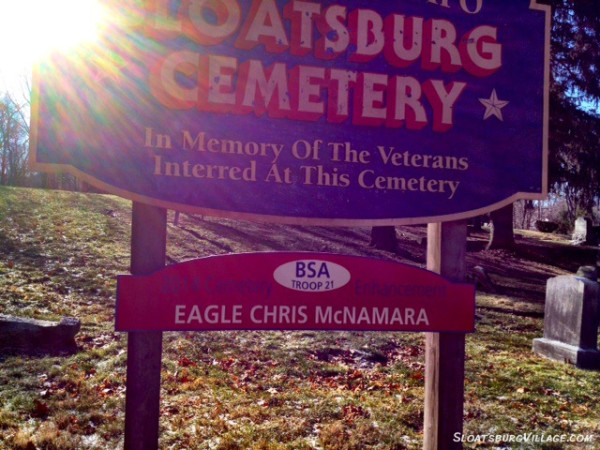 Most of the Eagle Projects have been led by members of local Troop 2146 which serves the Sloatsburg and Tuxedo communities. A recent project saw Eagle Scout candidate Chris McNamara from Troop 21 out of the Village of Airmont tackle an enhancement project at the Sloatsburg Cemetery that involved clearing debris, repairing doors from a utility shed, re-mortaring a stone entrance pillar, as well as beautifying and cleaning some 50 veteran headstones.
Most of the Eagle Projects have been led by members of local Troop 2146 which serves the Sloatsburg and Tuxedo communities. A recent project saw Eagle Scout candidate Chris McNamara from Troop 21 out of the Village of Airmont tackle an enhancement project at the Sloatsburg Cemetery that involved clearing debris, repairing doors from a utility shed, re-mortaring a stone entrance pillar, as well as beautifying and cleaning some 50 veteran headstones.
The Sloatsburg Cemetery is a Town of Ramapo historical site. Phil Tisi, who works in the town’s Office of Public Affairs, was McNamara’s Town of Ramapo sponsor. The project included donations from local American Legion Post 1643 for the veteran headstone cleaning and Arden Hill Nursery, which contributed several Blue Spruce trees and other foilage.
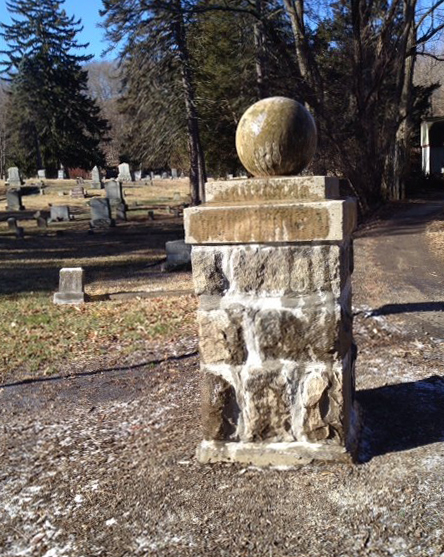
Pillar that was mortared and repaired at the entrance to the Sloatsburg Cemetery.
Tisi said that he “suggested to Chris that he do his Eagle Scout project in the Sloatsburg Cemetary because of its historical significance,” adding that McNamara did an outstanding job and exceeded expectations.
The Sloatsburg Cemetery has various war veteran grave markers, tracing nearly every American military engagement.
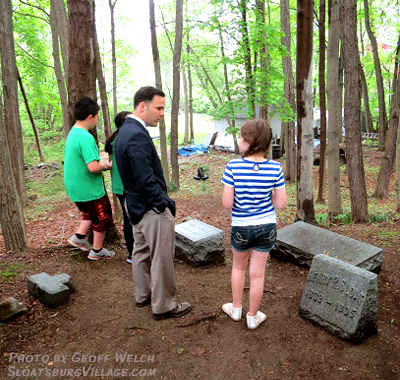
Sloatsburg Elementary School Principal Joseph Lloyd stands with students at the Sloatsburg Cemetery during the annual spring History Day tour.
The oldest part of the Sloatsburg Cemetery includes Sloat’s Knoll, a small rise of land near a picturesque branch of the Nakoma Brook, where many original Sloat family members are buried. The cemetery grounds became part of the Jacob Sloat estate when he built Harmony Hall around 1848 — the Jacob Sloat property stretched roughly from southwest Sloatsburg at Nakamo Brook northward over the rise of Liberty Rock.
According to Sloatsburg Village Historian Harrison Bush’s research on the matter, an historical marker that names John Sloat as the first person buried in the old cemetery may be spurious — other accounts suggest that John Sloat was originally buried at the cemetery by Smith’s Tavern to the south of Sloatsburg, where an older 18th-century cemetery existed. Sloat was a member of the Cornwall Militia when he was shot and killed by a jittery sentry at his father’s house, the Sloat House & Inn, in the waning years of the Revolutionary War, purportedly for failure to give the right password.
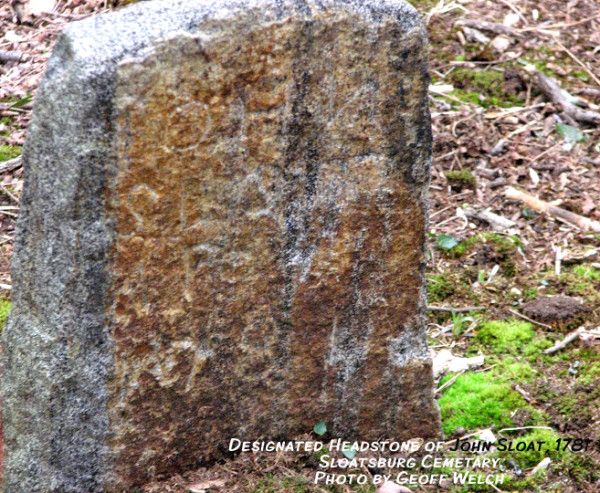 Bush, himself a Sloat descendent who looks strikingly similar to Jacob Sloat, said that some records indicate that John Sloat was later disinterred by his son Commodore John Drake Sloat to a Staten Island church cemetery. Commodore Sloat, uncle to Jacob Sloat, is famously credited with sailing into Monterey Bay and claiming the California territory for the United States in 1846.
Bush, himself a Sloat descendent who looks strikingly similar to Jacob Sloat, said that some records indicate that John Sloat was later disinterred by his son Commodore John Drake Sloat to a Staten Island church cemetery. Commodore Sloat, uncle to Jacob Sloat, is famously credited with sailing into Monterey Bay and claiming the California territory for the United States in 1846.
The John Sloat marker remains as a centerpiece of the Sloat burial knoll, nevertheless, as Sloat was shot and killed in the line of duty at his birthplace only several hundred yards away. The Sloatsburg Cemetery is listed on the National Register of Historic Places and includes the grave site of Jacob Sloat, operator of the Sloat Mill and builder of Harmony Hall, and Sloat patriarch Stephen Sloat, buried on the grassy knoll in 1806.
Chris McNamara logged some 500 hours on his Sloatsburg Cemetery project and was recognized by the Village of Sloatsburg Board of Trustees at a recent board meeting. McNamara wrote in a letter to Sloatsburg Mayor Carl Wright that the project was meant to add “dignity and respect to this hallowed historic ground and those buried there.”


